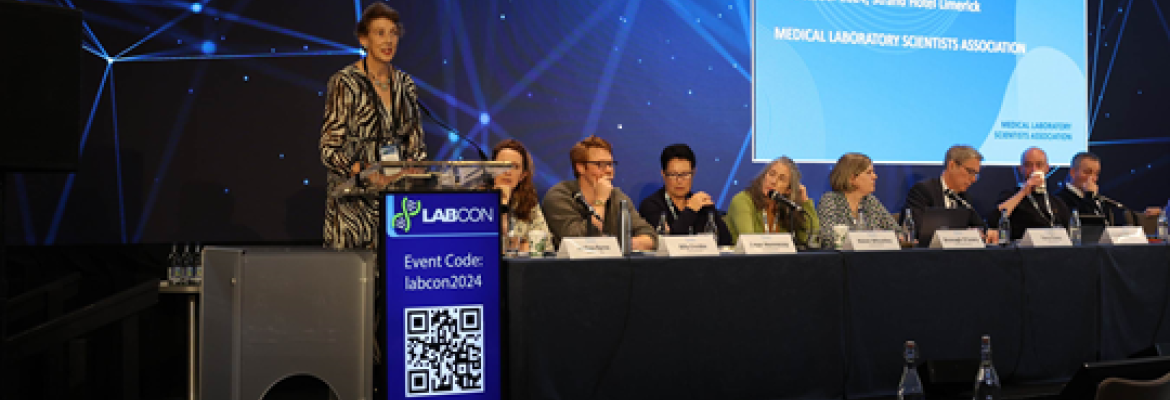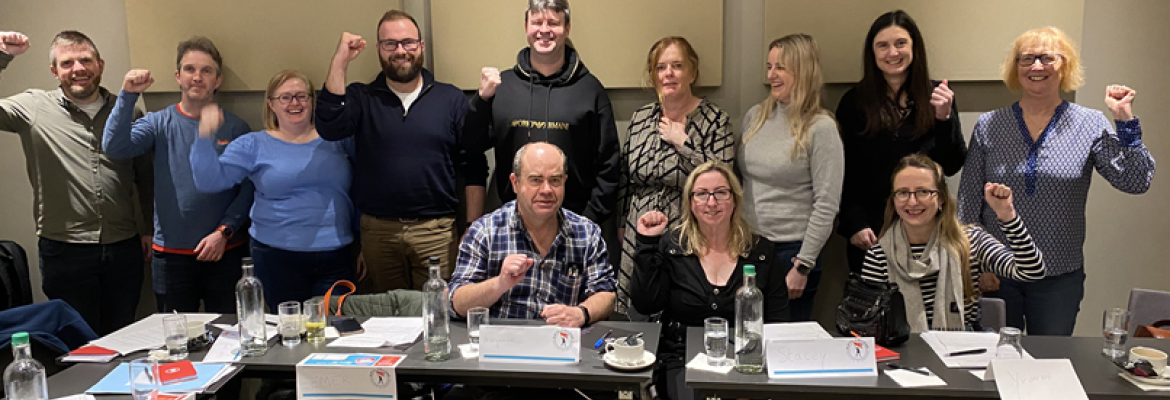|
MLSA Dates of Interest |
|
|
1950s |
|
|
1958 |
Laboratory Technicians first organised as a Section of the Workers’ Union of Ireland (WUI) No 15 Branch.
|
|
1960s |
|
|
1961 |
WUI Medical Laboratory Technologists’ Section (MLTS) formed in Dublin with John Duffy, Chair and Cyril Keogh, Secretary. |
|
1964 |
Medical Laboratory Technologists’ Association (MLTA) formally inaugurated as independent body. |
|
1966 |
First big row over On Call, started in Galway, settled with agreement for two guineas per case fee. |
|
1969 |
After management rejection of a pay demand in 1968, a limited but well-organised strike commences in the Meath and Richmond on 26 June. It remains the only strike in MLSA history. A Labour Court Recommendation is accepted as interim settlement and a Committee of Inquiry is set up under Con Murphy. |
|
1970s |
|
|
1970 |
Murphy Report is heralded as the “most notable achievement … in the life of the Association”. New grades and designations applied from September, Technician becoming Technologist. Full-time course begins in College of Technology. |
|
1972 |
Labour Court Recommendation on Emergency Services, granting 50% increase, is approved by AGM. |
|
1973 |
Working Party of Emergency Services established but very slow in its deliberations. MLTA Sub Committee on hazards to laboratory staff set up to improve health and safety. Association wins 10% anomaly claim backdated to January 1972. This was preceded by 94% vote in favour of industrial action. A Special General Meeting in December seeks a single, integrated career structure for Technologists and Biochemists in Chemical Pathology. |
|
1974 |
After a 10% wage increase in June, In December, Department of Health finally accepts in December that Emergency Service fees should move in line with salary increases. |
|
1975 |
Academy of Medical Laboratory Science formed with MLTA support. |
|
1979 |
Arbitrator finds against MLTA claim, 7 July, for parity with House Officer. Strike action approved at an EGM in November by 416-4, the largest meeting in Association history. but averted by a pay award of 5% plus £308. |
|
1980s |
|
|
1980 |
Cyril Keogh seconded from St Luke’s to work full-time for MLTA. |
|
1981 |
Emergency Services Agreement introduces sessional fee in larger hospitals for certain periods; fee per item system post-midnight and in smaller hospitals. Patricia McCarthy becomes the first female chairperson of the MLTA. |
|
1982 |
Department of Health issues proposals for State Registration |
|
1985 |
MLTA Membership reaches 1,000 for first time. |
|
1989 |
A report by Cyril Keogh for the MLSA/AMLS Working Party on the state of profession is published. The Report on Proposals for a Development in Organisation Structures for the Profession of Medical Laboratory Sciences recommends against combining the two organisations into a single entity. Membership falls to 970, the first fall since 1964, as employment levels in laboratories decline due to government health cuts and employment embargo. |
|
1990s |
|
|
1990 |
The FWUI amalgamates with the ITGWU to form SIPTU (Services, Industrial, Professional & Technical Union) and the MLSA becomes a SIPTU affiliate. The Industrial Relations Act 1990 introduces changes in trade union registration. The MLSA is unware until years later that SIPTU’s Negotiating Licence no longer extends to its affiliates. |
|
1992 |
Cyril Keogh retires and Helen Franklin is appointed as General Secretary. IAMLT World Congress is held in Trinity College and although it is a huge scientific and social success, the AMLS and MLTA are left with a debt. First Agents’ trade union training courses held. MLTA grants Journal of Biomedical Sciences £10,000 support grant |
|
1994 |
Membership climbs back above 1,000. |
|
1995 |
MLTA offices move from Parnell Square to Liberty Hall. The MLTA resigns from IAMLT, with the AMLS assuming affiliation. |
|
1997 |
Members vote 94% for strike action in May, following a large pay award to nursing grades and a much smaller offer to MLTA members. A subsequent LRC proposal on pay increases is accepted by 91%. The MLTA agree to participate in an Expert Group and Service Review process. MLTA changes its title to the Medical Laboratory Scientists’ Association (MLSA). |
|
2000s |
|
|
2001 |
Report of the Expert Group on Medical Laboratory Technician/Technologist Grades. The Expert Group Report formally re-names Medical Laboratory Technicians as Medical Scientists and establishes salary parity with biochemist grades as “an essential preliminary to the introduction of a Unified Career Structure” for medical scientist and biochemist grades. Report of the Medical Laboratory Service Review Group. The report recommendations include: the introduction of a standard career structure for all scientific laboratory staff; the development of a national approach to demand management and workload measurement standards for laboratory services; and development of training and development plan for each laboratory with a specific training budget based on overall laboratory payroll costs. |
|
2002 |
The first Report of the Public Service Benchmarking Body sunders the recently achieved parity with biochemists by awarding a smaller pay award to the marker grade of medical scientist than to the marker grade of speech and language therapists, with whom the biochemists are linked. |
|
2003 |
Helen Franklin resigns as General Secretary and is replaced temporarily by John Kane until a fulltime replacement is recruited. The MLSA commissions a report from Geraldine McDonnell into the organisation and structures of the union which recommends the appointment of a second fulltime official. |
|
2004 |
Terence Casey is appointed MLSA General Secretary. A Report on the National Laboratory Pilot Projects is published by a Joint Implementation Group of MLSA representatives and health service management. The MLSA registers as an independent trade union and obtains its own Negotiating Licence from the State. |
|
2005 |
John Kane is appointed MLSA Industrial Relations Officer in a fulltime capacity MLSA becomes an affiliate of the Irish Congress of Trade Unions [ICTU]. Report of the National Working Group on Small Laboratories. The report recommends a minimum of ten staff to provide an out of hours roster that complies with the Organisation of Working Time Act 1997. The Health and Social Care Professionals Act 2005 becomes law and CORU is established to regulate the state registration of twelve designated professions, including medical scientists. |
|
2007 |
The second Report of the Public Service Benchmarking Body fails to resolve the loss of parity with biochemists arising from the first Benchmarking report in 2001. Teamwork Report on Laboratory Medicine Services. The HSE issues a draft version of its Teamwork report, which proposes huge changes to service delivery including the development of several huge private laboratories for processing “cold” laboratory work. The report is based on a review carried out by Teamwork on behalf of the HSE without formal engagement or consultation with stakeholders including the MLSA. The report is only adopted by the HSE Board in 2009 and is never formally launched or implemented. |
|
2008 |
The HSE outsources cytology screening to an American laboratory, Quest Diagnostics, on a three-year contract. The MLSA strongly opposes the decision and warns of the long-term consequences to laboratory services and patients. |
|
2009 |
MLSA commissions an alternative report by EC Harris, Reform of Laboratory Medicine Services Within Ireland – Potential Options not Considered within the Teamwork Management Service Review. This report proposes a hub and spoke model for continued public provision of laboratory services. As the financial crisis takes hold in Ireland, the Government introduces the first in a series of Financial Emergency Measures in the Public Interest Acts (FEMPI). Pay increases due to public sector employees under the existing national agreement (Towards 2016) are abandoned. Pension Related Deduction (PRD – pension levy) is introduced on public sector earnings, including non-pensionable earnings such as on call payments. |
|
2010s |
|
|
2010 |
Government imposes pay cuts of between 5-10% on all public sector employees from January 1st. Public Service Agreement 2010-2014 (Croke Park Agreement). MLSA members reluctantly vote to accept the proposals to protect against outsourcing, compulsory redundancy and further pay cuts. Laboratory Modernisation Agreement/Extended Working Day. Arising from the Croke Park Agreement, the MLSA enters discussions with the HSE, on an extended working day and out of hours payments. MLSA members are balloted in February 2011 and accept the proposal.
|
|
2011 |
Government unilaterally introduces reduced salary scales (10% reduction) for new entrants to the public service. The MLSA celebrates its 50th birthday |
|
2012 |
The MLSA publishes its official history A Unique Association: A History of the Medical Laboratory Scientists’ Association 1961 – 2011. Written by Francis Devine, the book documents the important role of the MLSA in developing and protecting the profession of medial scientist in Ireland. |
|
2013 |
The first LabCon – a joint conference organised by the MLSA and ACSLM – is held in Kilkenny. Tony O’Brien, director general of the HSE, addresses a well-attended plenary session. Public Service Pay Agreement 2013-2016 - Haddington Road Agreement (HRA). The HRA imposes further pay cuts on salaries above €65,000, increment pauses for all salaries, and increases working hours. Arising from the HRA, new entrant salary scales are merged with the existing scales by the addition of two additional points at the bottom of each scale. |
|
2015 |
Public Service Pay Agreement 2015-2018 - Lansdowne Road Agreement (LRA). The LRA begins the process of restoring pay to public sector employees. The MLSA and ACSLM publish a joint position paper on advanced practice and extended scope of practice. The New Horizons paper calls for the implementation of a single career structure for laboratory scientists and the formal development of advanced practice roles and career pathway, including consultant scientist grade. Minister for Health, Leo Varadkar, addresses the 2015 LabCon conference in Kilkenny and expresses support in principle for a consultant scientist grade. |
|
2016 |
The Medical Scientists’ Registration Board is appointed by the Minister for Health, Simon Harris, and begins preparations for the opening of the Medical Scientists’ register under the supervision of CORU. John Kane retires and Bronagh O’Leary is appointed as MLSA Industrial Relations Officer. |
|
2017 |
Public Service Pay Agreement 2018-2020 - Lansdowne Road Agreement Extension (LRA2). Further progress is made on restoring pay to public sector employees. The PRD is to be abolished in 2019 and replaced by an additional superannuation contribution based on pensionable earnings only. |
|
2018 |
MLSA and ACSLM delegations address the Joint Oireachtas Health Committee on the 2008 cervical screening outsourcing. |
|
2019 |
On 1st January Pension Related Deduction (PRD) is replaced by Additional Superannuation Contribution (ASC) but is no longer payable on non-pensionable earnings including call. On 1st March measures to address the new entrant pay anomaly become due but a delay in issuing implementation circulars delays implementation. On 31st March the CORU Medical Scientists' Registration Board opens. At the MLSA AGM in April motions are passed calling for the restoration of pay parity with clinical biochemists and for pay increases equivalent to those secured by nursing grades. The new MLSA website is launched in April. Before being wound up, the Public Service Pay Commission recommends the establishment of an appropriate mechanism to examine the adequacy of current public sector pay arrangements. Legislation is passed in 2019 increasing the compulsory retirement age for all public servants to 70. Following industrial action by SIPTU earlier in the year over a promised job evaluation process, the Labour Court recommends the regrading of some support staff including medical laboratory aides, with the result that the starting salary for an MLA rises above the starting salary for a medical scientist. |
|
2020s |
|
|
2020 |
In January the MLSA serves a claim to the HSE for the restoration of pay parity and for parity of career progression with clinical biochemists. Engagement on the matter is delayed by the COVID-19 pandemic. Medical scientists rise to the challenge of the global pandemic by developing testing capabilities and reorganising working rosters and workplaces to ensure the continuity of services, amidst a growing recruitment and retention crisis. In June the MLSA and ACSLM prepare a joint submission to the Oireachtas Special Committee on the contribution of medical scientists to the COVID-19 response. Engagement commences with the HSE and Department of Health in the summer on the MLSA’s parity claim and the union makes a submission to the employer side on the recruitment and retention crisis in the profession. Following the commencement of public sector pay talks, the employer side indicates it can not discuss pay issues outside of any new pay agreement. Engagement continues in the Workplace Relations Commission on recruitment and retention issues and career progression for medical scientists At the MLSA AGM in October motions are overwhelmingly passed calling for industrial action if pay is not addressed. Building Momentum, a new public service agreement for 2020-2022 is negotiated between the government and the Public Service Committee of the Irish Congress of Trade Unions. As well as limited pay increases, it includes a 1% sectoral bargaining fund intended to deal with sectoral issues. |
|
2021 |
Following a ballot of members in January and the recommendation of the Executive Committee, MLSA members vote by 96% to reject Building Momentum because it is insufficient to deal with the parity claim; however, the agreement is ratified by a majority of ICTU unions and becomes public sector pay policy. On 31st March the transition grandparenting period of the Medical Scientists' Registration Board ends and registration becomes a statutory requirement to practise as a medical scientist. Medical scientists manage to maintain safe laboratory services despite a massive cyberattack on the HSE in May and the necessity to devise manual systems. Further motions at the MLSA AGM in September call for an immediate ballot for industrial action in pursuit of the parity claim. In October, the MLSA ballots its members in the public sector for industrial action up to and including strike action. The Executive Committee seeks a strong vote for industrial action to progress the parity claim and receives a 98% vote in favour of industrial action and 94% in favour of strike. Sectoral bargaining talks are delayed by the HSE cyberattack but commence in November 2021. THE MLSA is a distinct sectoral bargaining group and seeks to explore whether the process can resolve the parity claim without industrial action. |
|
2022 |
Sectoral bargaining talks end without agreement in January and the MLSA waits months for referral to the newly configured Public Service Agreement Group (PSAG) for dispute resolution. In March, the MLSA serves notice of nationwide industrial action consisting of 12-hour work stoppages on dates from March 30th. Following intervention by PSAG, the MLSA withdraws industrial action notice to attend PSAG with the employer side. The parties are asked to engage further. When further talks yield no solution, the MLSA again serves notice of a series of 12-hour work stoppages by public sector members to commence on 18th May. MLSA members in the public sector take industrial action nationwide for the first time in fifty years on 18th and 24th May. The action brings health services other than emergencies to a standstill and receives widespread public and political support. Further stoppages are planned for 25th & 31st May and 1st & 2nd June After two days of industrial action, the Labour Court intervenes and invites the parties to exploratory talks, following which the Court asks both sides to engage further in the Workplace Relations Commission and to revert to the Court with unresolved issues. Following engagement in the WRC, it is agreed to conduct a short assessment of medical scientist and clinical biochemist roles. The 1% sectoral bargaining fund is used as a 1% general pay round. To remove the starting pay anomaly compared to MLAs, the first point on the staff grade scale is removed for current scientists on that point and for new entrants. |





